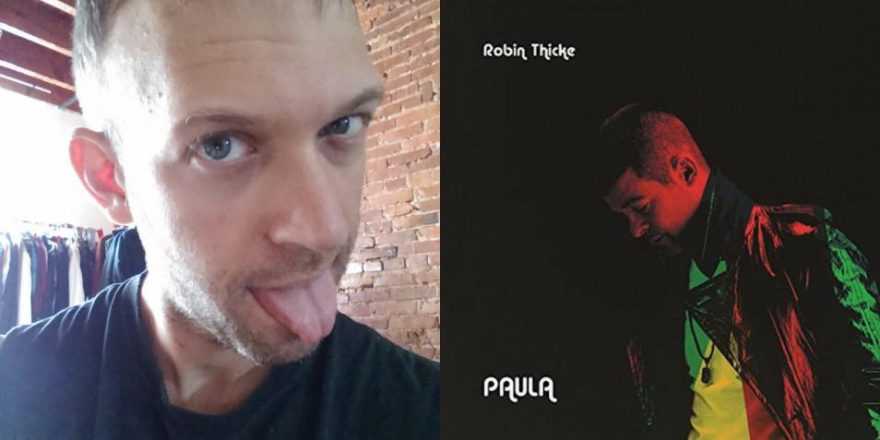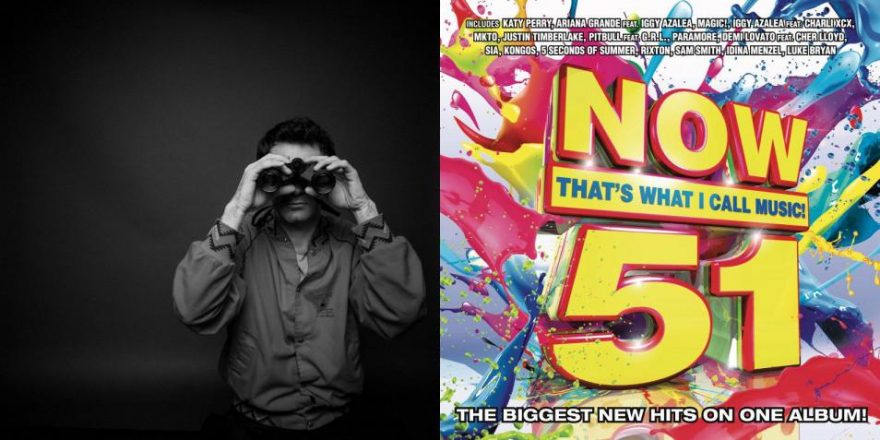Raw and uncut, Mobile Orchestra is far too harsh for human consumption, and it would be a gross violation of oaths I’ve sworn to both the Musicians’ Guild and the Guild of Record Reviewers to disregard this manifest fact and refrain from stating explicitly that this album is a quantity of severe irritant emanating directly from a Candidean candyworld of blinding bliss — a place to rival the Earth depicted in pharmaceutical commercials, or Teletubbyland. Nonprofessional listeners should be very, very careful handling this substance as it is currently being sold. In the song “Unbelievable,” one of the guys from Hanson gently coos, “My favorite part of Jurassic Park was how real the raptors looked.” Unbelievable is fucking right.
This is not to say it is unfit for analysis or even — with sufficient prudence — recreational use.
Owl City is the laptop-pop project of Minnesotan marshmallow mallspawn Adam Young, infamous for getting legit rich a few years ago with a brazen imitation of the Postal Service, aping everything about them including (especially) Ben Gibbard’s voice to an uncomfortable extent. Dude is aiming to prove himself to be something more than a one-pinch wonder, though, having embraced and integrated the path of EDM into his productions: Owly’s now a super-contemporary evil Postal Service— but, like, Wicker Man-evil, or angelic wrath-evil. Imagine the sound of Jersey Shore trax for the gentle fundamentalist teen. Or the taste of graham crackers misted modestly with consecrated Goldschlager.
If you naturally incline towards anxiety, I would highly suggest self-medicating in whatever manner you normally self-medicate prior to even reading about this record. I myself concentrated on Young’s new album for many hours before recognizing that I was accruing mild (but multiplying) symptoms of stimulant psychosis. I realized I would not be able to efficiently employ any kind of higher reasoning while this music was playing — which would, of course, prevent a competent analysis. Luckily, this is hardly an insurmountable obstacle given today’s technology: the album exists as digital files on my computer, and I need only to open them up with an audio editing program and make a few simple adjustments in order to render Mobile Orchestra conducive to an unimpeded interrogation.
If you can figure out how to put different colors of text in an email, you can distill the essence of any song. Subtle manipulations of such basic attributes as speed and pitch tend to mitigate the array of prickly signifiers necessary to position pop compositions in the furious ephemeral Right Now, the era-bound embellishments which clog the surface of the music and inhibit deep penetration. Underneath, the real spirit of the song becomes visible. You can turn The Lion King into Hamlet into Amleth into Brutus into Adam into a tadpole, and so on. After a day of interaction with the raw Mobile Orchestra, I resolved to apply my knowledge of this methodology1 and scrutinize the results.
My experimentation began with the aforementioned “Unbelievable,” the third single from this album. Basically, it’s like that Insane Clown Posse “Miracles” jam, except the thing that’s flipping these motherfuckers’ wigs is how cool Transformers and Yodas were. At the two-minute mark there’s a “We Didn’t Start the Fire”-style list name-dropping Goosebumps books, McDonald’s fries and beanbag chairs before Young, turning his eyes to the sky, asks, “What happens next?” There’s an Andy Griffith whistling choir in the track, too, which makes it weirdly reminiscent of Laibach’s “The Whistleblowers,” now the runner-up for the creepiest straight-faced-dystopian-anthem released in the last two years. If the Disney Channel had a Laibach, “Unbelievable” would be the blueprint.
However, slowed to half speed, with the pitched dropped five semitones, this icky Orwellian assault takes on the dignity of a clown performing at the court of the king. It almost feels safe to laugh along.
It quickly became clear that slowing and lowering were the go-to tools for countering the toxic elements present in pure, unadulterated Mobile Orchestra. Young’s compositions, divested of his manically sober tempos and HD castrati vocal tone, gain gravity and begin to exert some attraction. Dropping the tempo of “I Found Love” to two-fifths of its original speed and lowering the pitch a half an octave miraculously irons out an incredible amount of cringe-inducing tweeness, drastically increasing the majesty of its string section, and putting a pleasantly dark edge on even its most Livejournalistic lyrics: “It’s so dark/In my mind/I cross my heart/and hope to die” goes from being a completely dispensable cliché to a chilling and desperate confession.
After the success of these early attempts, I moved my attention to the fourth track of the album, “My Everything,” excited to see what could be extrapolated from one of the album’s explicitly religious songs. Lowering the pitch half an octave once again proved worthwhile, but after halving the tempo and then quartering it, the song was still crushingly unremarkable; at 720% of its initial length, though, it simply became crushing — and also nearly half an hour long. After modest deliberation, I excised the audio between 12:30 and 18:00 and sutured the remaining segments of song together, streamlining the setup for the breakdown occurring at the new 14-minute mark. In its original form this breakdown lasts 20 seconds and barely registers, but stretched to two-and-a-half minutes, it becomes fucking numinous. This may actually be a reasonably good simulation of how Adam Young perceives this song: as a powerful and moving paean reflecting the glory of a loving and omnipotent deity.
And if I may diverge a bit further into the technical for a moment: once one begins making stretches of this length, the fine details of your time-manipulating algorithm become more important. Time-stretching basically works by cutting up your source audio into slices (often called “granules” or “grains”), then spreading those grains apart in time and filling in the gaps between them with duplicates or variations of the adjacent grains. Setting rules to dictate the size of the grains has a great impact on how the rhythm transforms in a stretched tune. Listening to the example of “My Everything” you can plainly hear that introducing stimulating rhythmic irregularities (sometimes called “artifacts”) into a song that is rhythmically moribund can completely revitalize it.
From here I instinctively skipped to the eighth track, “Can’t Live Without You,” on the suspicion that the “You” referred to is the Father, the creator of the Christian creation story, which proved correct. I must admit I have a fondness for songs that are constructed to superficially resemble secular love songs but upon closer examination are lovesick hymns to the Father. This very well might be the least injurious jam on the album — you could probably even pull off playing this at the strip club. Intrigued, I dropped the song to a third of its original tempo, dropped the pitch four semitones and fixed the grain-slicing to occur regularly on every quarter note. This dragged the rhythm off the beat in a consistent way that very much agrees with this particular song. Gospel jams wearing the slick frocks of the Ministry of Sound kinda conjure nagging images of Jesus’ uncharacteristic violence toward the moneychangers in the Temple, but our transmuted version stutters endearingly, like a leper or midget tax collector called to the front of the thronging crowd by Christ himself. The effect is particularly clear in the first line of the second verse (“When I’m hit like a hook to the jaw in a title fight/I’m down and I’m knocked out cold”), somehow wringing cause for genuine sympathy from a statement of self-pity that in its original form elicits nothing of the sort.
In its unaltered state, “The Verge (featuring Aloe Blacc)” opens the record, conjuring Hootie with the same deadly accuracy that Young employed when he put a bullet in the Postal Service. After quite a bit of experimentation, it proved resistant to all of the above methods of song manipulation, which prompted me to employ new methods of stretching. The first of these: pitching up instead of down. I’m picky about Chipmunks vocals, but the frequency spectrum of this song seemed particularly well suited to this operation: the very low end rose to a nice, Burial-esque plane, and the song’s jingling guitars moved from the Blowfish to Explosions in the Sky.
The plodding rhythm never really coalesced into anything satisfying, however, so I made the more drastic step of changing the program’s stretching algorithm to one that injects some randomness into the size of the sound granules, yielding an intentionally messier (or more textural) stretch. I maximized the values for both the initial size of the granules and the amount of random variation applied to the final size of each individual granule. It paid off: every section of the song became a melodramatic build-up. Every drum hit was turned into a sharp flutter, and dropping the grain size slowly while the song played revealed a sweet spot where the flurries started to feel slightly more free jazz than pure chaos. The original track is straight prom-bait, and this stretch — which spills just over the 10-minute mark — draws attention to how many times Young says, “Out on the verge/On the verge of the rest of our lives.” Young’s original creation makes sense for some kind of Hollywood depiction of the climactic end of high school, but this modified version actually reflects the feeling of those interminable years of waiting for Real Life to start.
“Bird with a Broken Wing” at 323.4% with the pitched lowered just one semi-tone produced a top-notch new Jesu song. I tried for a while to actually time-compress this song — to reduce the amount of audio by slicing the thing into grains and then throwing some of the grains away — but the efforts resulted in a stress-inducing mess and strengthened my conviction that this is a music that benefits little from further compression, only becoming more and more like an expensive mosquito. That would be an ignominious state for a song that, within a cloak of over-saturated imagery (“Like a viper bite in aspiderweb/It’s so deathly dark in the alleyway… To see the sun again I’d give anything”), reveals itself as the final statement of a boy who has resolved to kill himself: “Though I won’t be missed, I would say it’s time/For a different twist in the storyline.” I don’t think anyone would have any idea of the truly bleak streak that afflicts Young if we hadn’t cooled this ditty down to a listenable state.2 At this point, I became convinced that if Young were to cap his sequencing application at 50 BPM, he could make a truly fine record.
Then, of course, I had to struggle with the track that follows, pop-country radio bait “Back Home,” most memorable for its shout-out to the 10-foot-tall maize they have down in the ol’ archetypal Hick Heaven of the song’s title. So it’s kind of literally a cornier version of “Unbelievable,” except here a return to the comforting memories of the past is a physical possibility. I settled on replaying the song at 186% of length and four semitones lower. With the granules fixed to half-note intervals and instructed to fill in the newly created space between grains with reversed versions of the grain preceding, the beat gets a cool record-scratch turnaround at the end of each bar and the song’s acoustic guitars take on a nicely glitchy texture reminiscent of Jimmy Tamborello’s pre-Postal Service work as DNTEL, or the glitch-folk practiced in the aughts by bands such as the Books and Howard Hello. The downpitching does a good grime-ish thing to the drums and (as usual) ameliorates Young’s creepy falsetto, but here it has the unwanted side effect of turning the Horse Apples in guest vocalist Jake Owen’s (yes, the country singer) voice up to 10. I suppose it’s not super surprising that a pop-country tune on a quasi-Christian-EDM record needs more than a little work to be converted into something pleasant.
“Thunderstruck,” the third track in the album’s original sequence, stands apart from the rest because it has clear aspirations to nightclub applications. It’s full of those squelchy digital squibbles on which Skrillex has built his empire, automatically raising the question of what would come of nudging this track’s tempo just a little bit higher, to 140 BPM, the magic number of dubstep. In addition to lowering the pitch five semitones, I made another, more subtle adjustment: imposing a triplet shuffle on the reconstituted rhythm. In most ways, it’s the least I’ve interfered with one of these songs, but the difference between this version and the original cannot be overstated.
Turns out the penultimate track, “You Are Not Alone,” is also all about the Father. It’s much more subdued than any other track on the album, so its placement in the record’s sequence makes sense on an instinctual level. It also turned out that, any way you slice it, this song is boring. Eventually I stopped trying to stretch it and turned to the opposite process: time compression. At a little less than double-time it reached drum ‘n’ bass tempo and began to exhibit faint traces of value. And, once again, lowering the pitch four semitones brought homeboy’s voice into a tolerable register. The resulting audio still begs for more interference — additional breakbeats, at the very least, although a full-on reorganization of the song’s various parts would probably be required to really make this tune into something you’d listen to twice.
The final track, “This Isn’t the End,” is also about suicide, although by focusing on the emotional turmoil a man’s suicide inflicts on his daughter, it makes it a counterpoint to the self-murder-endorsing “Bird with a Broken Wing.” Both the original tempo and the pitch of this morbidly disturbing sub-“Mmmm Mmmm Mmmm Mmmm” story-jam are the apex of inappropriate. Increasing duration 480% and setting all slices to a fixed size of one complete whole note unlocked a spacious chamber-Oval vibe fit for the grand finale of a Mobile Orchestra. Once more introducing a new element to the process, I added a pitched (up five semitones) delay effect with a longish (70%) feedback level to add a layer of celestial shimmer to the glacial giant that was taking form. My final modification was to amputate the last third of the song, cutting at three seconds before the 11-minute mark. What resulted is the somber tune that someone should have had the nads to write a while ago about the beatification of Kurt Cobain.
The music press has not been particularly kind to Mr. Young this go-round, but it is my sincere belief that anyone who tries out these translations of his new songs will be shocked at how listenable and effective they are. I’ve made a lot of jokes in this piece, but I’m deadly serious about the ability of simple audio alchemy to extract the true spirit and even exhume buried treasure from stagnant tracks. Mobile Orchestra’s big birth defect might be clear with only a cursory glance — Pollyanna stadium-synth-pop songs about feeling sad or small or sensitive don’t make a lick of fucking sense unless you’re a child who has learned about grief from television and movies — but what a difference a little bit more time and way less frantic pace make. Young is perhaps not quite as far from salvation as he may seem.
FOOTNOTES:
1The program I usually use for creative decompression of this type is Robert Henke’s Ableton Live, because it allows one to very quickly tweak the particulars of how your sound is going to change when you turn it into a longer, different piece of sound, without adding or using any other sounds outside your original source. However, the processes described are not unique to that particular program and I have taken care to describe my modifications in ways that will allow readers to reproduce the processes with the tools of their preference.









